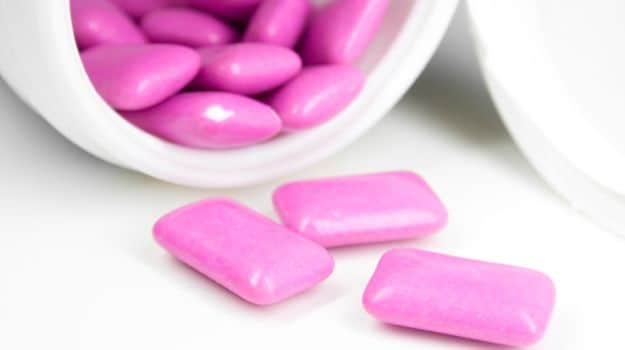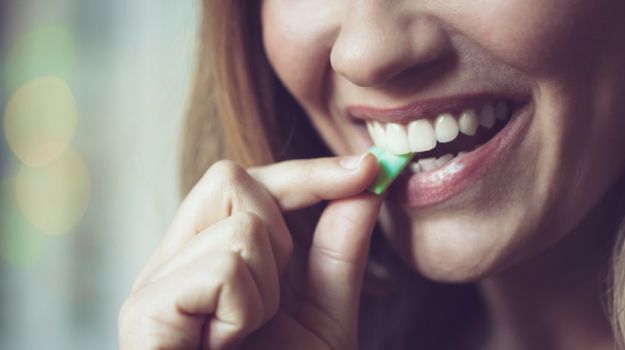
Do you know that every time you're popping your favorite chewing gum in your mouth, you could actually be chewing a secretion from sheep's wool? Yes, that's right! It has been found that chewing gum contains lanolin, which is a waxy secretion from the sebaceous glands of the skin of sheep. Its function is to make sheep's wool waterproof. For this reason, lanolin is generally used as an ingredient in skin products, which is fine. But is it alright to consume it? Lanolin is present as a component of chewing gum base (the rubbery substance that imparts the "chewable" characteristic to chewing gum), which is regarded as standardized and so manufacturers do not need to reveal its individual ingredients. Therefore, the innocent-looking chewing gum might not be as innocuous as you thought!
What Goes into Making a Chewing Gum?
Chewing gum is typically composed of Gum Base, Softeners, Sweetenersand Flavors. These are briefly discussed below.
Gum Base: As indicated above, the gum base is rubbery in nature, and used to be derived from latex sap (called chicle) of the sapodilla tree. Other natural sources include gum Arabic, natural resin, food grade agar, Chiku,Ghatti, Jhingan, Khair etc.
However, these days, with the advent of rubber synthesis technology,synthetic rubber is primarily used for making the gum base. These include:
- Synthetic resin
- Polyvinyl acetate
- Polyethylene
- Glycerol esters of wood resin/gum resin
- Glycerol esters of partially hydrogenated wood/gum resin
As has been indicated above, there are many components of gum base (besides lanolin) that remain unknown to the consumer, since the manufacturers have no intention to declare them, in the absence of any strict regulations forcing them to do so.
Softeners: As the name suggests, the primary function of this component is to maintain a "soft" consistency of the gum so that it is appealing to the consumers. This component helps to retain moisture and prevents the gum from hardening. The most common softeners are glycerin and vegetable oil.

Sweeteners: As you have probably guessed, the most common sweetener is sugar. Sometimes, corn syrup is also used. For the health conscious, the following artificial sweeteners are also used:
- Saccharin sodium
- Sorbitol
- Mannitol
- Xylitol
- Maltitol
- Aspartame (methyl ester)
- Acesulfame potassium
- Sucralose
What are the Various Varieties of Chewing Gums?
Chewing gums come in a variety of shapes & sizes, attractive wrappers, flavors (already discussed) and a number of novel functions. Some chewing gums are advertised to impart a white sheen to the teeth (Orbit Whitening) or for giving kids some fun e.g. Bubble Gums (Hubba Bubba, Super Bazooka etc.). Other varieties have medical functions, and contain drugsimpregnated in them. These include the following:
The major international agency on food safety and standards is the Codex Alimentarius, which has fixed the maximum levels (in mg/kg) of various food additives in chewing gum. The Food Safety and Standards Authority of India (FSSAI), the apex food regulatory authority in India has fixed the chemical composition and maximal levels (in ppm) of the various food additives in chewing gum/bubble gum.
Are there any Health Hazards from Chewing Gums?
Yes there are! There are a number of health hazards that consumers should be aware of.
Chewing Gum Can Trigger Temporo-Mandibular Joint Disorder (TMD): The temporo-mandibular joint is the joint that connects the jaw bone (mandible) with the temporal bone of the skull. Excessive chewing can cause differential contraction of the muscles, particularly if you chew more with one side of the mouth as opposed to the other. This can trigger TMD, which causes chronic pain, tightening and inflammation of the jaw muscles, ear aches, tooth aches, as well as migraine-type headaches.
Chewing Gum Can Cause Gastrointestinal Problems: Chewing gum increases the air intake into the gastro-intestinal (GI) tract, which can cause abdominal cramps and bloating. It can also aggravate the condition in patients suffering from irritable bowel syndrome (IBS). Peppermint flavored chewing gum can cause gastric acid reflux. Also, popping a chewing gum into the mouth immediately causes the brain to send signals to the digestive system to be prepared to expect food intake. As a result, saliva and other gastric juices, including gastric acid starts to be secreted. Since, there is no intake of food, this actually may compromise your ability to digest food due to lack of digestive juices, when you actually consume food. This can cause indigestion. Some chewing gums sweetened with artificial sweeteners can cause diarrhea.

Chewing Gum Can Cause Tooth Decay: Consumption of chewing gum sweetened with sugar essentially coats your teeth with sugar, which leads to tooth decay. Besides tooth decay, dental erosion can also occur. Dental erosion occurs by cumulative decalcification, which slowly erodes the teeth. This can occur even in the presence of artificial sweeteners, since they contain acidic flavorings and preservatives that can erode the teeth, in spite of the presence of xylitol that fights cavities.
Chewing Gum Can Release Mercury from Dental Fillings:Amalgamated dental fillings typically contain silver, mercury and tin. Chewing releases mercury vapors from the fillings, which can be rapidly absorbed into the blood. Although the amount of mercury is minute, you wouldn't want to contaminate your system with mercury, however small.
The foregoing discussion highlights the composition, varieties and health hazards of chewing gums. Although the damaging effects of chewing gums have been highlighted, it may be added that chewing a piece of gum after a meal, once in a while, helps release saliva that keep your teeth clean and the flavor can add freshness to the breath. Just don't make it a habit.
About Dr. Saurabh Arora
A dynamic professional with doctorate in pharmaceutics from Jamia Hamdard University and post graduate in the same field from NIPER, Dr. Saurabh Arora has invented a patented nano technology based delivery system for curcumin, the active constituent of Haldi. He has a number of national and international research publications and patents to his credits. He is a member of the Indian Pharmaceutical Association.
Heading the testing laboratory and research business at Arbro and Auriga for close to 10 years, he has designed and setup 4 state of the art testing laboratories in New Delhi, Baddi and Bangalore. Dr. Saurabh Arora leads a team of over 250 scientists and professionals in 4 laboratories which serve more than 10,000 customers each year from the food, retail, hospitality, nutraceutical, pharmaceutical, cosmetics, agri, medical device, research, academics and real-estate industries.
He has also established Food Safety Helpline, a one stop solution for the people in the food industry to stay up-to-date, understand and implement the requirements of the Food Safety and Standards Act and the Food Safety and Standards Authority of India (FSSAI). The site has a simple objective to help food businesses understand and comply with the requirements of this new and rapidly evolving food law which has been put in place to provide safe and hygienic food to all the citizens of India.
Disclaimer:
The opinions expressed within this article are the personal opinions of the author. NDTV is not responsible for the accuracy, completeness, suitability, or validity of any information on this article. All information is provided on an as-is basis. The information, facts or opinions appearing in the article do not reflect the views of NDTV and NDTV does not assume any responsibility or liability for the same.
No comments:
Post a Comment